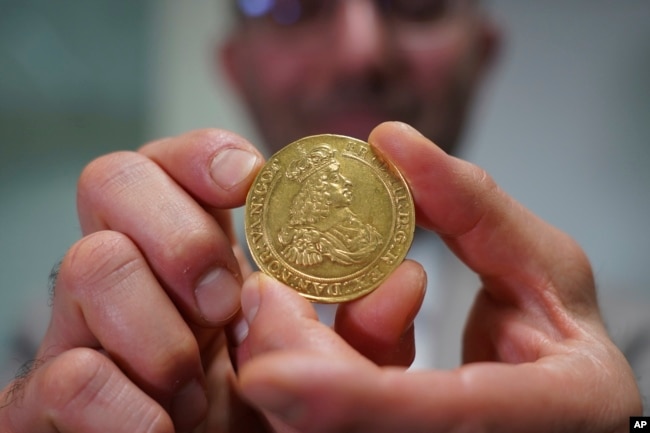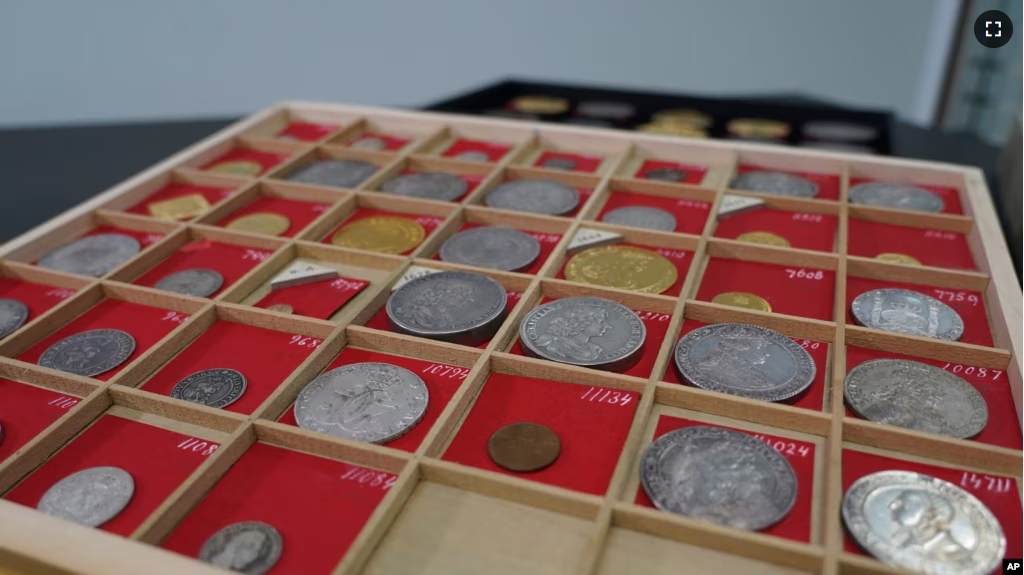A Danish businessman’s large coin collection is set to go on sale one hundred years after his death. The collection could be worth up to $72 million.
Lars Emil Bruun directed lawyers what to do with the coin collection after his death in a legal document called a will. In it, Bruun required that his collection of about 20,000 coins be kept safe for 100 years before being sold. Deeply moved by the destruction of World War I and fearing another war, Bruun wanted the collection to be a reserve for Denmark.
Now, over a hundred years since Bruun’s death at the age of 71 in 1923, the collection will begin to be sold.
New York-based Stack’s Bowers, a rare coin auction house, will begin selling the collection this fall. Several sales are planned. On its website, the auction house calls it the “most valuable collection of world coins to ever come to market.” The collection’s existence has not been widely known, and the public has never seen it before.

“When I first heard about the collection, I was in disbelief,” said Vicken Yegparian of Stack’s Bowers Galleries.
“We’ve had collections that have been off the market for 100 years plus,” he said. “But they’re extremely well known internationally. This one has been the best open secret ever.”
Born in 1852, Bruun began to collect coins as a boy in the 1850s and 1860s. Years later, he grew very rich selling the milk product, butter.
His wealth permitted him to continue his hobby. Bruun went to auctions, and he built a large collection that came to include 20,000 coins, medals, tokens and banknotes from Denmark, Norway and Sweden.
Following World War I, Bruun left exact instructions in his will for the collection.
“For a period of 100 years after my death, the collection shall serve as a reserve for the Royal Coin and Medal Collection,” the will said.
It added, “Should the next century pass with the national collection intact, it shall be sold at public auction and the proceeds shall accrue to the persons who are my direct descendants.”
Some descendants tried to break the will and get money early. But they were not successful. “I think the will and testament were pretty ironclad. There was no loophole,” Yegparian said.
Yegparian estimated some pieces may sell for just $50, but others could be sold for over $1 million. He said possible buyers were requesting a list of the objects before the auction was announced.
The collection first remained at the former Danish royal residence of Frederiksborg Castle. Later, it was stored at Denmark’s National Bank.
Denmark’s National Museum had the right to purchase some of the coins before the public. The National Museum purchased seven rare coins from Bruun’s collection. Six of the coins were gold and one was silver. They all were made between the 15th and 17th centuries by Danish or Norwegian rulers. A supporting group paid the cost of over $1.1 million.
Helle Horsnaes, a coin expert at the national museum, used the term unique – meaning one of a kind – to talk about those coins. She said, “We chose coins that were unique. They are described…as the only existing specimen of this kind.”
Horsnaes expressed wonder about the collection: “The pure fact that this collection has been closed for a hundred years makes it a legend.”
I’m John Russell.
James Brooks reported on this story for the Associated Press. John Russell adapted it for VOA Learning English.
______________________________________________
Words in This Story
coin –n. metal money that is round in shape
reserve – n. something set aside for a particular purpose, use, or reason
auction – n. a sale of something to the highest bidder
hobby – n. an activity done for fun or relaxation
intact – adj. untouched or unharmed
accrue – v. to come into existence as a legally enforceable claim; to come as a direct result of something
testament – n. an act by which a person outlines the uses of his or her property after death
ironclad – adj. very firm or secure
loophole – n. an unclear or doubtful item in a text through which the intent of a contract or obligation may be evaded
specimen – n. an individual or item considered typical of a group
